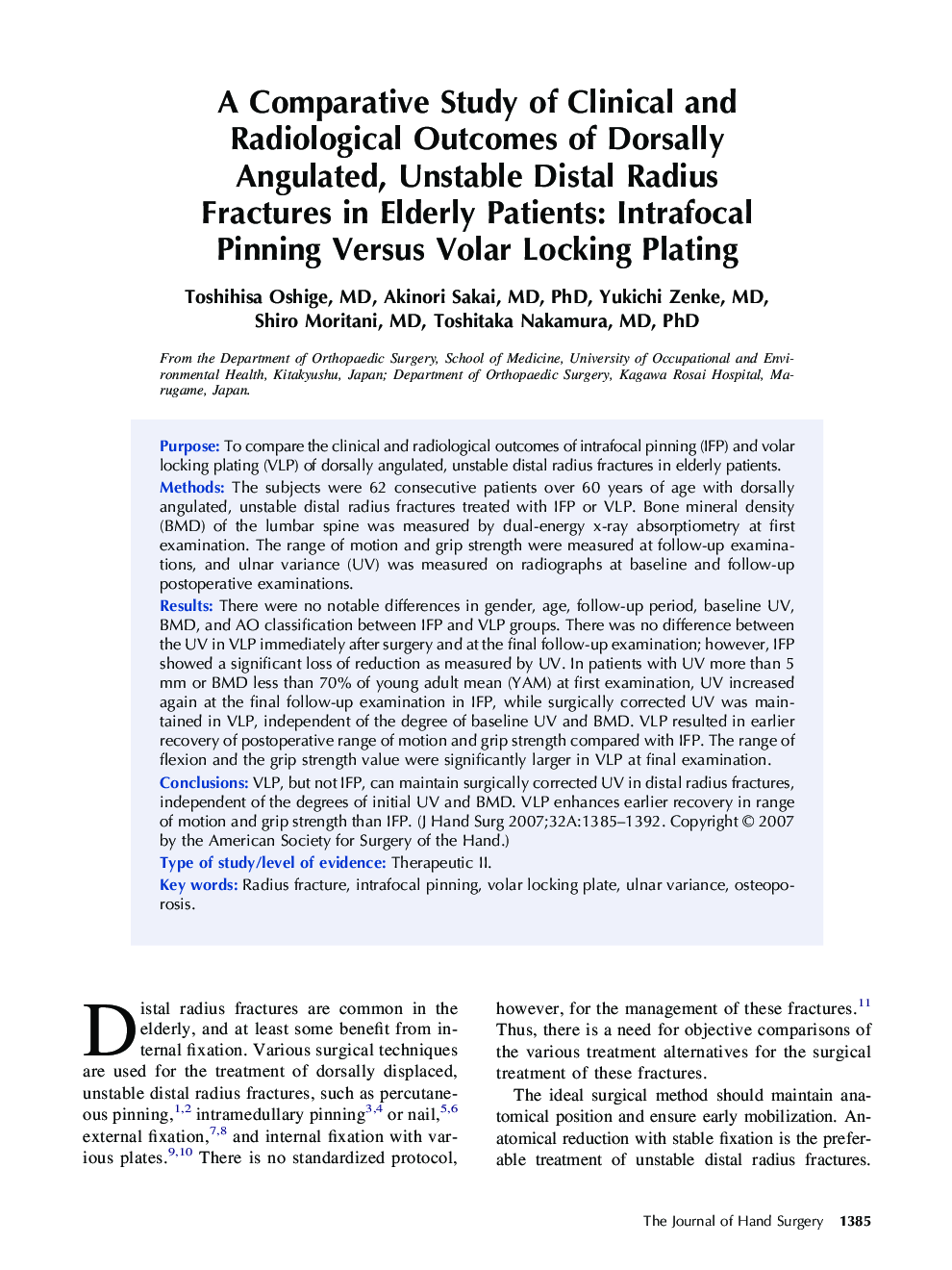| Article ID | Journal | Published Year | Pages | File Type |
|---|---|---|---|---|
| 4071032 | The Journal of Hand Surgery | 2007 | 8 Pages |
PurposeTo compare the clinical and radiological outcomes of intrafocal pinning (IFP) and volar locking plating (VLP) of dorsally angulated, unstable distal radius fractures in elderly patients.MethodsThe subjects were 62 consecutive patients over 60 years of age with dorsally angulated, unstable distal radius fractures treated with IFP or VLP. Bone mineral density (BMD) of the lumbar spine was measured by dual-energy x-ray absorptiometry at first examination. The range of motion and grip strength were measured at follow-up examinations, and ulnar variance (UV) was measured on radiographs at baseline and follow-up postoperative examinations.ResultsThere were no notable differences in gender, age, follow-up period, baseline UV, BMD, and AO classification between IFP and VLP groups. There was no difference between the UV in VLP immediately after surgery and at the final follow-up examination; however, IFP showed a significant loss of reduction as measured by UV. In patients with UV more than 5 mm or BMD less than 70% of young adult mean (YAM) at first examination, UV increased again at the final follow-up examination in IFP, while surgically corrected UV was maintained in VLP, independent of the degree of baseline UV and BMD. VLP resulted in earlier recovery of postoperative range of motion and grip strength compared with IFP. The range of flexion and the grip strength value were significantly larger in VLP at final examination.ConclusionsVLP, but not IFP, can maintain surgically corrected UV in distal radius fractures, independent of the degrees of initial UV and BMD. VLP enhances earlier recovery in range of motion and grip strength than IFP.Type of study/level of evidenceTherapeutic II.
